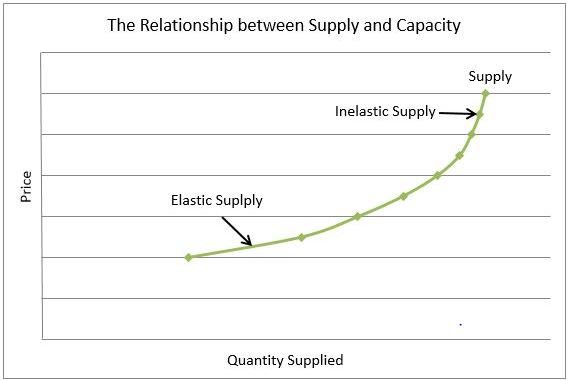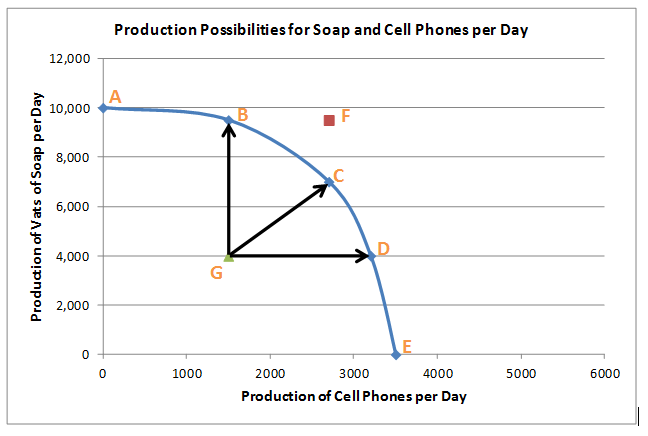Capacity
View FREE Lessons!
Definition of Capacity:
A business’s
capacity is the maximum number of units it can produce without increasing its fixed assets.
Detailed Explanation:
A liter container has the capacity to hold one liter. A manufacturing plant’s capacity is the maximum number of units it can produce over a specific period without investing in additional fixed assets such as plant or equipment. If a manufacturing plant is operating at capacity, it cannot quickly respond to an increase in demand by producing more of a good or service. The company can increase its capacity only if it invests in new equipment or even a new factory. The company has a price inelastic supply curve because it is difficult to take advantage of a price increase by quickly increasing production. A significant price increase may be needed to entice the company to invest in the fixed assets required to increase its capacity, but that takes time. A company may respond by raising its price to reduce the quantity demanded to a level that meets the capacity of its manufacturing plants. It is difficult for companies to operate at capacity for extended periods. Deferred maintenance may result in breakdowns and work stoppages. This is one reason why the marginal costs increase when approaching capacity. An economy is growing when most companies are operating near capacity. Inflation is a likely result.
The supply graph below illustrates this. Companies producing at less than full capacity are operating on the elastic section of their supply curve. Note that a small increase in price will result in a relatively larger increase in the quantity supplied. When the plant is near capacity, the supply curve becomes more inelastic because companies are less responsive to price changes.

Economies are at their capacity when operating on the boundary of what economists call the “production possibilities frontier.” A production possibilities frontier is a graphical representation of combinations of amounts of two goods or services that an economy can produce by transferring resources from one good or service to another. All the factors of production are being used efficiently on the boundary. When an economy operates inside the frontier, it is not at its capacity, and it can increase the output of one unit without diminishing the production of another good or service. The graph below illustrates several possibilities. Assume a country produces two products: cell phones and vats of soap. At points B, C, D, or anywhere on the boundary of the curve, resources are being used efficiently, and the country is operating at capacity. Point F is unattainable because it is outside the frontier and beyond the country’s capacity. Point G is inside the frontier, so the country is operating at less than capacity. The country could increase the production of soap vats without sacrificing the output of cell phones and move to Point B. It could also produce more cell phones without decreasing the number of vats if the economy moves from G to D.

Dig Deeper With These Free Lessons:
Factors of Production – The Required Inputs of Every Business
Price Elasticity of Supply – How Does a Producer Respond to a Price Change
Production Possibilities Frontier

